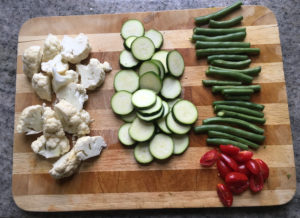Streamline Mealtime with these Cooking Tips and Tricks
Streamline Mealtime with Smart Cooking Tips and Tricks
Note: Smart Cooking Tips and Tricks is a guest post written by Leslie Forde of Mom’s Hierarchy of Needs.
In kindergarten, the Easy Bake Oven launched my love of baking. In my twenties cooking became an obsession; ever since, I have spent countless hours happily perfecting recipes, discovering new flavors and tweaking menus. But it was a little over a year ago, just before my youngest turned two, that I realized I had to enact cooking tips and tricks to fit life with kids.
I still cook daily and believe quality food is akin to medicine for long-term health. But I have rethought my meals and highlighted where I wasted precious time.
I have learned that how you prepare food impacts clean up, and that there are four areas where I – and you! – can save significant time in the kitchen.
Use these strategies to repurpose time and play with your kids, exercise or invest in the type of self-care that makes you happiest.
Cooking Tip #1: Chop All Veggies At Once
_____

_____
Food processors are great for purees, but the amount of time it takes to clean the machine’s many parts negates the time it saved chopping for you.
What’s my single-biggest time-saving trick when cooking? Use just one cutting board and batch chop vegetables at once.
For ‘hearty’ vegetables that keep until the next day (i.e. onions, carrots, cucumbers, celery and broccoli) cut double the amount you need and save the excess in airtight containers to reduce chopping time tomorrow.
Notice that I have lined up the green beans. Anytime you have a long, thin vegetable like asparagus, zucchini spears or carrot sticks, lining them up means they require just a single pass with the chef’s knife versus cutting them individually.
Cooking Tip #2: Cook Your Veggies with Your Grains
_____

_____
Here’s one of my favorite cooking tips and tricks: Simple vegetables do not need their own pan.
Cook veggies atop your grains and save yourself the hassle of washing another pot.
Whether you’re simmering barley or boiling pasta, just throw in the frozen peas, fresh snap peas, frozen broccoli and more directly on top for the last 2 to 8 minutes of cooking, but vary time according to the vegetable and whether using frozen or fresh.
If your children are sensitive to foods touching other foods, use a steamer basket atop the grain to contain the vegetables.
Cooking Tip #3: Cook Vegetables with your Roasted Proteins
_____

_____
Whenever you roast or braise meat, include a vegetable in the same pan. Use this opportunity for both your pan and oven to perform double-duties, and do so even if you plan to serve the vegetable the next day.
Cooking your protein with your meat saves water when washing; it saves energy, too, because you heat up the over just one time.
Apply a little olive oil and salt and pepper to the vegetable before roasting or braising. Some oven-friendly vegetables include the following:
- thinly sliced (peeled) russet potato
- thinly sliced (peeled) sweet potato
- peeled and sliced butternut squash
- thickly sliced onions
- roughly chopped eggplant
Cooking Tip #4: Double Your Grains & Use Leftovers
_____
It’s sad but true: Pasta doesn’t always reheat well, but heartier (and healthier) whole grains do! Rice, couscous, bulgur and quinoa can be cooked in bulk then stored in airtight containers. They reheat nicely when simmered in a little water or broth. Then – with the grain out of the way – you’re only left to deal with the protein and vegetables for your next meal.
… A note on getting your kids to eat their vegetables …
_____
1. Make Fun shapes.
It takes a little extra time (but not much!) to create zucchini squares, tomato pinwheels, carrot towers, stand up ‘walking’ cucumbers, lentil and sweet potato soccer balls, et cetera. If the food is fun, it is more likely to be consumed without fuss.
2. Purée them.
I put a thin layer of hummus and/or avocado on any sandwich or quesadilla. My kids don’t even know quesadillas are not traditionally made with hummus because they’re so used to eating them this way!
3. Add a condiment.
Add chia seeds or shredded cheese on top to make any food more interesting.
4. Utilize the Two-Bite rule.
For my oldest (aged 7) the house rule is to try all foods by taking two bites. If he still doesn’t like it, I do not require that he eat the entire thing. Instead, I retry the rejected food in a few weeks; he then often happily consumes the food he insisted he didn’t like.
Leslie Forde’s blog, Moms Hierarchy of Needs focuses on self-care and personal growth. She also shares recipes and time-saving dinner menus. If you sign up for her weekly email you will receive her free e-book, ‘The Ultimate Time-Saving Guide to Family Dinner’ that details her system to cleverly disguise leftovers, batch cook meals, stock the pantry and whip up quick weeknight recipes.
Stay in-the-know!
Sign up for monthly eco-friendly inspiration.


